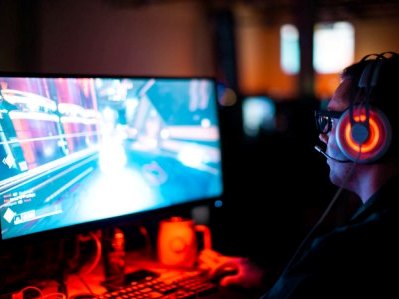 Game development is a captivating fusion of art, science, and engineering. It involves creating immersive virtual worlds where players can explore, compete, and experience epic adventures. Behind the scenes, game developers employ a myriad of mathematical and computational techniques to achieve realism and interactivity. Among these techniques, quaternions stand out as a remarkable mathematical tool that plays a vital role in game development. But why are quaternions used in this context, and what makes them so special?
Game development is a captivating fusion of art, science, and engineering. It involves creating immersive virtual worlds where players can explore, compete, and experience epic adventures. Behind the scenes, game developers employ a myriad of mathematical and computational techniques to achieve realism and interactivity. Among these techniques, quaternions stand out as a remarkable mathematical tool that plays a vital role in game development. But why are quaternions used in this context, and what makes them so special?
Quaternions are a four-dimensional extension of the familiar concept of complex numbers. While they may seem abstract and esoteric at first, their unique properties make them indispensable for specific tasks in 3D graphics and game development.
Here’s a closer look at why quaternions are employed in this field:
Smooth Rotations
In game development, objects often need to rotate smoothly in 3D space. Traditional approaches using Euler angles can suffer from issues like gimbal lock, which causes unexpected and undesirable rotations. Quaternions offer a more elegant solution. They can smoothly interpolate between different rotations, ensuring that objects move fluidly and without glitches.
Efficient Interpolation
Quaternions simplify the interpolation of orientations between two points in 3D space. Linearly interpolating Euler angles can lead to erratic and non-uniform motion. Quaternions, on the other hand, provide a straightforward way to interpolate rotations over time, ensuring that the movement looks natural and fluid.
Reducing Computational Overhead
Quaternion operations are computationally more efficient than matrix operations for certain tasks, such as rotating vectors. In real-time game development, where performance is critical, quaternions offer a lightweight solution for handling rotations.
Combining Multiple Rotations
Games often require combining multiple rotations, such as when a character tilts while turning. Quaternions can seamlessly handle this situation, simplifying the process of chaining rotations without introducing undesired artifacts.
Uniform Sampling of Rotations
When generating random orientations or implementing camera controls, quaternions provide a way to uniformly sample rotations. This is particularly useful for ensuring that in-game actions and camera movements appear natural and unbiased.
Spherical Interpolation (Slerp)
Quaternion slerp is a powerful technique for smoothly transitioning between two orientations, making it a valuable tool for character animations, camera transitions, and cinematic sequences.
Real-time Physics Simulations
In physics-based games, where accurate and real-time simulations are essential, quaternions are used to represent the rotation of objects. Their efficiency and precision make them the go-to choice for handling these simulations.
Quaternion Camera Control

Quaternion-based camera control is often used in first-person and third-person games. It allows players to look around smoothly and intuitively, creating a more immersive gaming experience.
In conclusion, quaternions are a fascinating mathematical construct that finds a natural and vital application in the world of game development. Their ability to represent and manipulate rotations in 3D space without the pitfalls associated with Euler angles or matrices has made them a beloved tool for game developers. Quaternions not only simplify complex rotation operations but also enhance the realism and fluidity of in-game movements and interactions, ultimately contributing to the immersive and enjoyable gaming experiences we all cherish.
